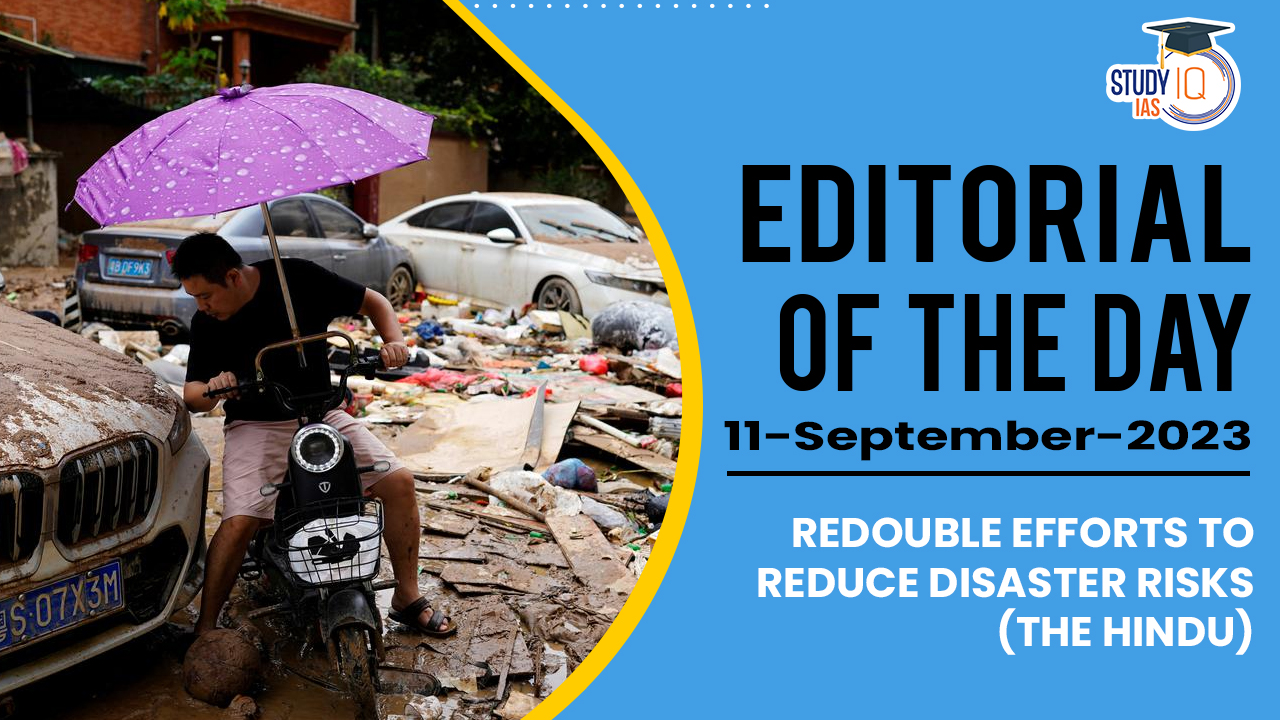Context: The article is discussing several interconnected global challenges and issues that were highlighted at the G20 summit in New Delhi.
Decoding the Editorial
- Critical Global Juncture: The article begins by emphasising that the world is at a critical juncture, where risks are increasing faster than efforts to reduce them. This sets the stage for the discussion of various global challenges.
- COVID-19 Pandemic Aftershocks: The article mentions that the aftermath of the COVID-19 pandemic is still being felt, and this crisis, along with others, is putting the world’s ability to cope to the test.
- Polycrisis: The term “polycrisis” is used to describe a situation where multiple crises are occurring simultaneously. In this case, the article mentions war, debt, and food insecurity as some of the crises the world is facing.
- Climate Crisis: The article highlights the climate crisis as a significant backdrop to these challenges. It mentions that extreme weather events are happening more frequently and with greater intensity, which is likely linked to climate change.
- Rise in Disasters: It is being argued that the increase in disasters is not an isolated occurrence but rather a trend. For instance, there have been severe flooding and wildfires in different parts of the world and this could become the new normal if more action is not taken.
- Impact on Vulnerable Countries and Communities: The article points out that vulnerable countries and communities are disproportionately affected by these challenges, despite contributing the least to the problems. It notes that many of the countries most vulnerable to climate change also have severe debt issues.
- India’s Situation: The article specifically focuses on India, stating that it is already one of the most disaster-prone countries. It mentions that in 2022, India experienced numerous disasters and extreme weather events, with the 2023 monsoon causing significant damage and loss of livelihoods.
- Opportunity for Cooperation: Finally, the article suggests that the G20 Summit in India provides an opportunity for international cooperation and efforts to build resilience against these global risks.
Solutions at Hand:
- Solutions at Hand:
- The article emphasises that solutions for both adaptation and mitigation to address global challenges like climate change and disaster risk are available.
- These solutions include the Sustainable Development Goals (SDGs), commitments made in the Paris Agreement to limit global warming to 1.5°C, and the Sendai Framework for Disaster Risk Reduction.
- Progress and Urgency:
- While these frameworks exist, progress in implementing them has been slow.
- However, it also notes that in the current year, United Nations member states committed to accelerating efforts to build resilience with renewed urgency.
- Lessons from COVID-19:
- The COVID-19 pandemic has taught important lessons, particularly about the need for comprehensive disaster risk reduction, resilience, and adaptation measures.
- The crisis led to innovative approaches, including digital solutions like computer modelling and India’s CoWIN digital vaccine system.
- Optimism in India’s Leadership:
- The article expresses optimism about India’s efforts in disaster risk reduction.
- All 28 states in India have prepared their own disaster management plans, leading to a significant reduction in mortality from extreme weather events.
- Financial Resources:
- India’s 15th Finance Commission introduced reforms to disaster risk financing, allocating significant resources for disaster preparedness, response, recovery, and capacity development at both the national and state levels.
- International Engagement:
- India is actively engaged in promoting disaster resilience and sustainability on the international stage.
- India’s efforts through the Coalition for Disaster Resilient Infrastructure and the deployment of India’s National Disaster Response Force to disaster-affected areas worldwide.
- G20 Presidency and Disaster Risk Reduction:
-
- India’s ongoing presidency of the G20 has particularly established a dedicated work stream on disaster risk reduction.
- The Disaster Risk Reduction Working Group aligns with the SDGs and reflects shared priorities.
Transformations we need:
- Integration of Disaster Risk: The article emphasizes the importance of integrating disaster risk considerations into various aspects of society, including how we build infrastructure, how we make investments, and how we live our lives. This integration should be comprehensive and span all levels of society.
- Early Warning Systems: The United Nations (UN), with India’s support, is working on spearheading early warning systems. These systems can provide crucial information about impending storms or hazards, allowing people to take protective measures. Even a 24-hour warning can significantly reduce the damage caused by such events.
- Global Multi-Risk Warning System: The ultimate goal is to establish a global multi-risk warning system that covers various types of hazards, including biological, tectonic (related to earthquakes and geological activity), and technological risks. This system aims to provide timely warnings and information to people worldwide.
- Global Data Capabilities: Improving global data capabilities is seen as essential for predicting and responding to various risks effectively.
- Inclusivity and International Cooperation: It is important that no one is left behind in disaster prevention, response, and recovery efforts. There is a need for enhanced international cooperation, particularly for countries in the Global South, which may have fewer resources and capacity to address disaster risks.
- Opportunity for Transformation: The G20 summit and the outcomes of the Disaster Risk Reduction Working Group are seen as opportunities to shape a future where societies are better equipped to withstand disaster risks.


 SSC CGL Exam 2025 Apply Online Starts Ap...
SSC CGL Exam 2025 Apply Online Starts Ap...
 Daily Quiz 19 April 2025
Daily Quiz 19 April 2025
 Vehicle-to-Grid (V2G) Technology and its...
Vehicle-to-Grid (V2G) Technology and its...





















